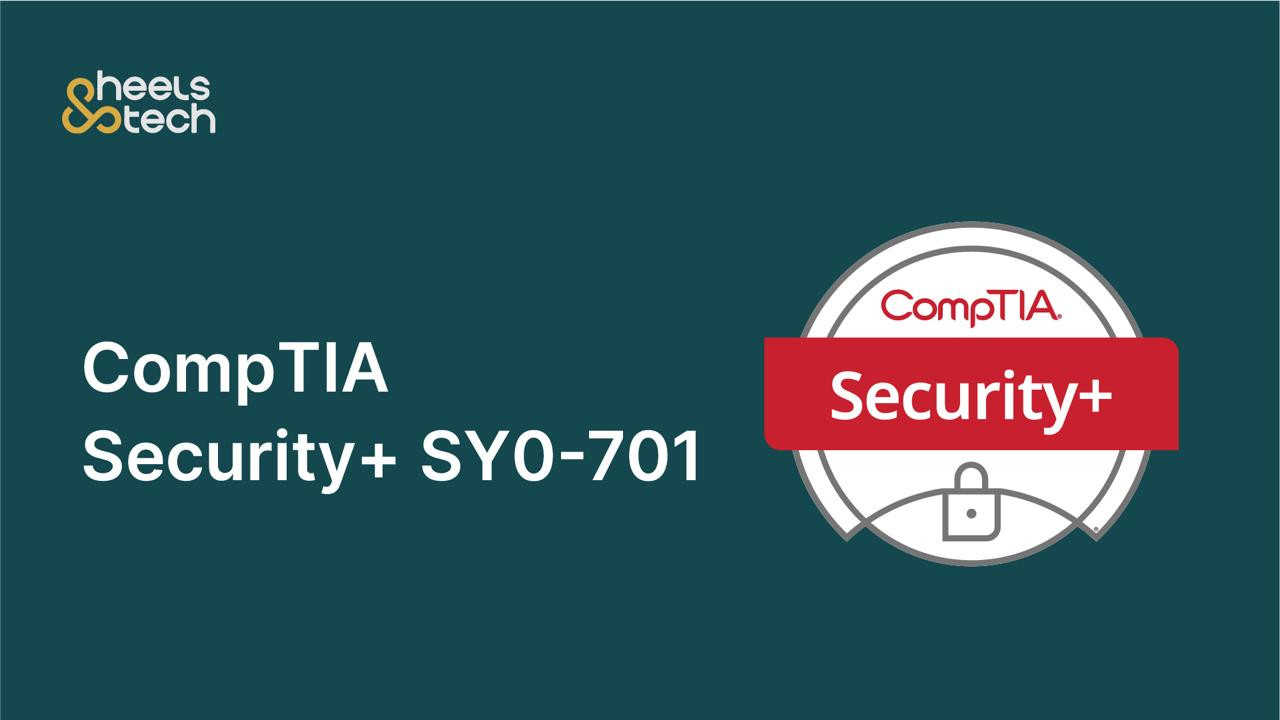CompTIA Security+ SY0-701
CompTIA Security+ is an industry-based, vendor neutral, Cybersecurity certification suitable for intending Cybersecurity Professionals, Managers and Administrators, whose interest is for a security certification that is encompassing.
This internationally recognized certification has been designed from the ground up to help you learn and master the skills and technical know-how to protect digital resources. It is a global Cybersecurity certification of choice.
Our classes are online, highly instructive, interactive and practical. We provide the training required for the exam, the skills required for the fieldwork, and the necessary support required to take and pass the exam in the first attempt.
EXAM OBJECTIVES (DOMAINS)
The certification outlines 28 chapters clustered into 5 domains thus:
DOMAIN ONE: GENERAL SECURITY CONCEPTS
- CHAPTER 1 Comparing and Contrasting the Various Types of Controls
- CHAPTER 2 Summarizing Fundamental Security Concepts
- CHAPTER 3 Understanding Change Management’s Security Impact
- CHAPTER 4 Understanding the Importance of Using Appropriate Cryptographic Solutions
DOMAIN TWO: THREATS, VULNERABILITIES, AND MITIGATIONS
- CHAPTER 5 Comparing and Contrasting Common Threat Actors and Motivations
- CHAPTER 6 Understanding Common Threat Vectors and Attack Surfaces
- CHAPTER 7 Understanding Various Types of Vulnerabilities
- CHAPTER 8 Understanding Indicators of Malicious Activity
- CHAPTER 9 Understanding the Purpose of Mitigation Techniques Used to Secure the Enterprise
DOMAIN THREE: SECURITY ARCHITECTURE
- CHAPTER 10 Comparing and Contrasting Security Implications of Different Architecture Models
- CHAPTER 11 Applying Security Principles to Secure Enterprise Infrastructure
- CHAPTER 12 Comparing and Contrasting Concepts and Strategies to Protect Data
- CHAPTER 13 Understanding the Importance of Resilience and Recovery in Security
Architecture
DOMAIN FOUR: SECURITY OPERATIONS
- CHAPTER 14 Applying Common Security Techniques to Computing Resources
- CHAPTER 15 Understanding the Security Implications of Hardware, Software, and Data Asset Management
- CHAPTER 16 Understanding Various Activities Associated with Vulnerability
- CHAPTER 17 Understanding Security Alerting and Monitoring Concepts and Tools
- CHAPTER 18 Modifying Enterprise Capabilities to Enhance Security
- CHAPTER 19 Implementing and Maintaining Identity and Access Management
- CHAPTER 20 Understanding the Importance of Automation and Orchestration Related to Secure Operations
- CHAPTER 21 Understanding Appropriate Incident Response Activities
- CHAPTER 22 Using Data Sources to Support an Investigation
DOMAIN FIVE: SECURITY PROGRAM MANAGEMENT AND OVERSIGHT
- CHAPTER 23 Summarizing Elements of Effective Security Governance
- CHAPTER 24 Understanding Elements of the Risk Management Process
- CHAPTER 25 Understanding the Processes Associated with Third-Party Risk Assessment and Management
- CHAPTER 26 Summarizing Elements of Effective Security Compliance
- CHAPTER 27 Understanding Types and Purposes of Audits and Assessments
- CHAPTER 28 Implementing Security Awareness Practices
Duration: 16 Weekends (96 Hours)
Venue: Online Instructor-Led


